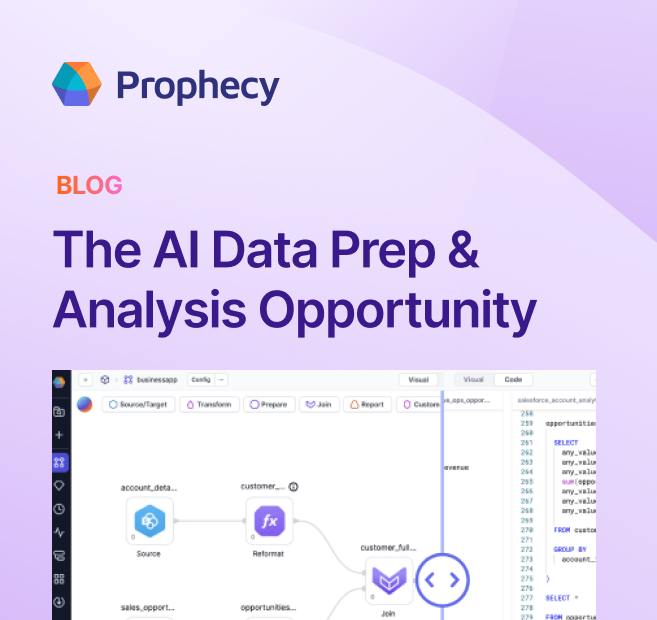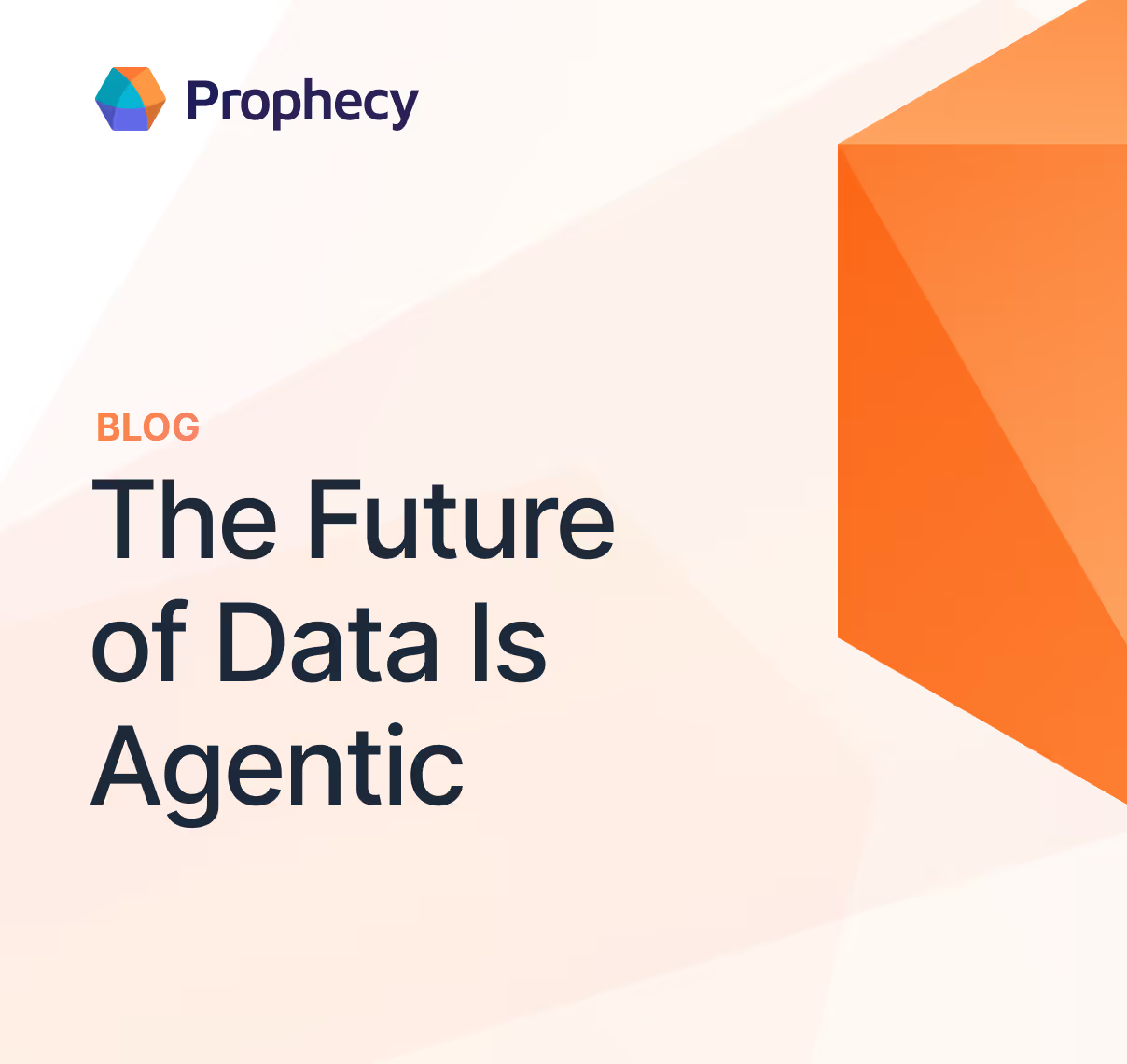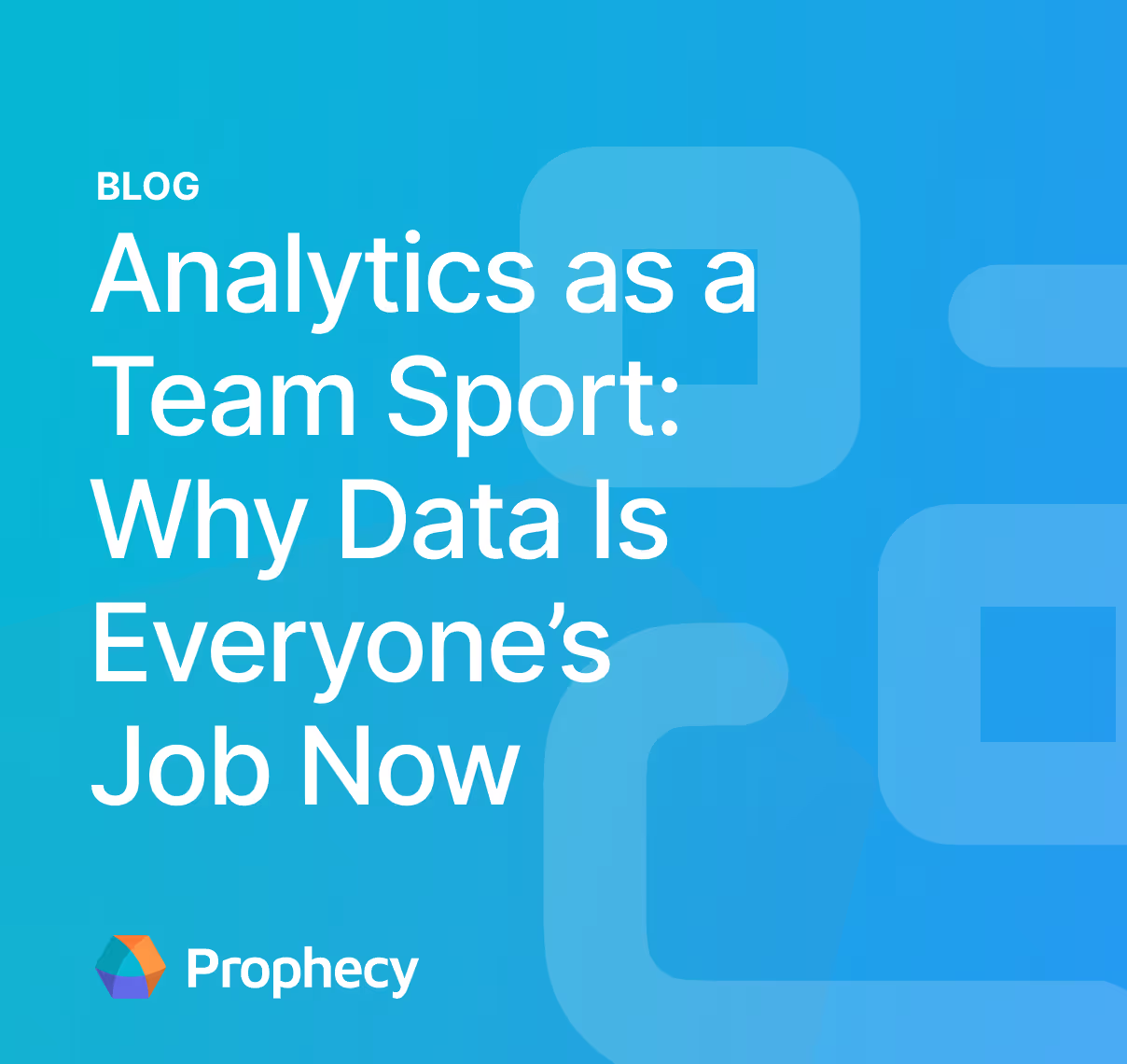Unlock the Full Potential of Data With Data Literacy
Boost your organization's success by empowering teams with data literacy, enabling faster, smarter decisions, and enhanced collaboration.
Your organization is awash in data, capturing every click, transaction, and interaction. With more data than ever before, most data leaders are eager to collaborate with different teams, helping them analyze this wealth of information and make truly data-driven decisions.
Yet, a paradox persists: despite this abundance, critical decisions often stall. Why? Because raw data frequently fails to translate into clear, actionable insights.
Often, the root of this challenge is human. Many teams simply lack the skills or confidence to work with data effectively. This crucial ability is known as data literacy: the power to read, interpret, and use data to drive impactful business decisions.
The business case for cultivating data literacy is undeniable. Organizations that prioritize it innovate faster, make smarter choices, and ultimately stay ahead of the curve. However, a significant gap remains between data professionals and business users in fully harnessing data's potential. Business teams frequently encounter delays in accessing information or struggle to extract meaningful insights without constant reliance on data engineers.
Bridging this gap through enhanced data literacy empowers employees at every level to leverage data independently. This, in turn, drives faster decision-making and fosters more efficient business operations across the board.
What is data literacy?
Data literacy is the ability to read, work with, analyze, and communicate data. At its core, it’s about being able to use data in a way that drives value within your role, whether you're a business analyst, a manager, or even an executive.
Some key competencies of data literacy include:
- Data manipulation: The ability to use tools to transform and clean data, ensuring it’s in the right format for analysis
- Reading and interpreting data: Understanding data sources, recognizing patterns, and drawing meaningful insights
- Analyzing data: Ability to perform statistical analysis, recognize trends, and make predictions based on data
- Communicating with data: Presenting data clearly and effectively to stakeholders to support decision-making
Data literacy in the modern enterprise
Today, data is a fundamental part of decision-making in enterprises. Data literacy enables digital transformation by making sure that everyone—regardless of technical expertise—can contribute to data-driven initiatives. As organizations adopt AI, analytics, and automation, data literacy becomes the backbone for leveraging these technologies effectively.
Every role in an enterprise can benefit from data literacy. Whether it's a marketing team member analyzing customer data or a finance professional forecasting trends, data literacy empowers employees to make smarter decisions faster. The shift from relying solely on data engineers to a more self-sufficient business environment enables greater agility and more responsive decision-making.
The impact of data literacy on businesses
Data literacy has a profound effect on an organization's overall performance. Here are just some of the ways data literacy drives business success:
Improved decision-making
When employees at all levels of the organization have data literacy skills, decision-making becomes faster, more informed, and more accurate. Business users can access and analyze the data they need in real time. This leads to better outcomes, as decisions are based on facts and trends rather than gut feelings or outdated information.
Self-sufficiency
Data literacy empowers business teams to take charge of their own data needs without always having to rely on technical teams. Whether it’s generating reports, analyzing customer behavior, or tracking KPIs, data-literate teams can handle these tasks independently. This autonomy fosters a sense of ownership and accountability among employees.
Increased efficiency
Data literacy reduces the barriers to data access and analysis, enabling teams to work more efficiently. Employees no longer need to wait for data engineers to process requests; they can use self-service tools to explore data and generate insights on their own. This reduces the time spent waiting for data, accelerates project timelines, and increases overall organizational productivity.
Competitive advantage
Organizations with high data literacy are better equipped to stay ahead of the competition. Employees can identify trends, react to market changes, and uncover opportunities faster than less data-savvy organizations. A data-literate workforce can make quicker, more strategic decisions, allowing the business to adapt to evolving market conditions and capitalize on new opportunities before competitors do.
Enhanced collaboration
Data literacy fosters stronger collaboration between business and technical teams. When both groups share a common understanding of data, the communication barriers that typically exist between them are reduced. This results in more effective problem-solving, as data engineers can focus on optimizing technical infrastructure while business users leverage their domain knowledge to ensure data meets business requirements.
Scalability
With a data-literate workforce, organizations can scale their data capabilities without proportionally increasing the size of specialized teams. When employees across departments can work independently with data, it spreads the workload and ensures that data efforts are aligned with business goals. This scalability allows organizations to grow more efficiently without overwhelming data teams with an ever-expanding list of requests.
Challenges to achieving data literacy
While the benefits are clear, building data literacy across teams presents its own challenges. Some of the main obstacles to achieving organization-wide data literacy include:
- Technical complexity: Many traditional data tools require specialized skills, making it difficult for business teams to work independently. Without the right tools and training, data tasks remain in the hands of engineers.
- Data overload: With so much data available, it can be overwhelming for non-technical employees to make sense of it all. The challenge lies not only in accessing data but also in interpreting it in a meaningful way.
- Governance and security: Many organizations face resistance to efforts to improve data literacy due to concerns about data security and governance. A lack of proper governance frameworks can deter employees from engaging with data due to fears of violating compliance standards.
- Resistance to change: Some employees may be resistant to adopting a data-driven mindset, particularly those who are used to relying on intuition or experience. Changing organizational culture to prioritize data literacy requires both time and leadership buy-in.
- Lack of training: Many organizations still lack structured data literacy programs or educational resources to help employees improve their skills. This limits the ability to create a culture of data-driven decision-making.
How to improve data literacy in your organization
Building a data-literate organization isn’t just about offering a few workshops or buying a set of tools. It’s a comprehensive effort that involves upskilling, fostering a data-driven culture, and empowering employees with the right tools and knowledge.
Follow these steps to improve data literacy across your teams:
1. Assess current data skills
Before diving into training programs, it’s essential to understand where your organization stands in terms of data literacy. Conducting an assessment to evaluate your team's existing data skills will help you identify knowledge gaps and the areas that need immediate focus.
Your assessment can include:
- Employee surveys: Distribute surveys to employees to assess their comfort level with data tools and processes. You might ask questions about their experience with data analysis, the tools they use, and their comfort in making data-driven decisions.
- Skill audits: Perform a skill audit to understand the specific competencies that need improvement. For example, if your analysts struggle with interpreting basic visualizations or working with basic data models, those are areas to address first.
By gaining a clear understanding of where the gaps lie, you can target your efforts more effectively, ensuring that training is tailored to your organization's specific needs.
2. Define role-specific data literacy standards
Not all employees need the same level of data literacy. To make data literacy initiatives more effective, organizations should define clear, role-specific standards. For example, while business analysts may need proficiency in data visualization and reporting tools, executives may only require a high-level understanding of how data informs strategic decisions. By tailoring data literacy expectations to the specific needs of each role, you ensure that employees have the skills most relevant to their daily tasks and responsibilities, rather than adopting a one-size-fits-all approach
These role-specific standards also help set measurable goals for data literacy development. As employees progress through their learning journey, they can track their improvements based on the expectations set for their role, which makes their growth more tangible and aligned with organizational goals. By focusing on the skills that directly impact each employee’s contribution to the business, organizations can foster greater engagement with data literacy initiatives and encourage a more meaningful, personalized learning experience.
3. Secure leadership buy-in and modeling
For data literacy initiatives to succeed, securing leadership buy-in is essential. Senior leaders need to champion the cause by allocating resources, prioritizing training programs, and demonstrating the value of data literacy through their own actions. When leadership consistently uses data to inform decisions and communicates its importance in achieving business goals, it sets a clear example for the rest of the organization. This modeling of data-driven decision-making from the top down helps cultivate a culture where data literacy is valued and actively pursued.
In addition to setting the tone, leaders must provide ongoing support to ensure data literacy efforts are successful across teams. This means providing the necessary budget for training and tools, offering feedback on progress, and fostering an environment where employees feel encouraged to improve their data skills. By investing in data literacy and actively participating in the learning process, leaders show their commitment to making data an integral part of the organizational culture, which in turn helps to motivate others to follow suit.
4. Implement tailored training programs
Now it’s time to implement training programs that will help employees acquire the necessary knowledge to work effectively with data. Consider implementing the following as part of your training program:
- Formal training programs: Partner with online educational platforms to provide formal courses in data literacy. These might cover fundamental topics such as understanding data types, creating basic visualizations, or using data analysis tools. For more advanced users, offer courses in machine learning, statistics, and data management.
- On-the-job training: Encourage team members to learn through hands-on experience. Assign data tasks to business teams, such as creating dashboards or analyzing customer data, and support them with a mentorship program or on-demand resources. This hands-on experience will help them gain confidence in their abilities.
- Continuous learning initiatives: Learning about data literacy shouldn’t be a one-time event. It needs to be an ongoing process. Offering continuous learning opportunities through various channels—like eLearning platforms, webinars, and workshops—helps keep data skills fresh and relevant.
5. Deploy self-service data platforms
To empower business users and promote data literacy, it’s essential to implement self-service data platforms that enable employees to access, analyze, and visualize data on their own. These platforms should be intuitive and user-friendly, allowing employees to perform data tasks without needing deep technical expertise. By providing easy-to-use tools, organizations allow business teams to independently generate reports, explore data insights, and make data-driven decisions in real time.
However, deploying self-service tools also requires ensuring data governance and security are embedded within the platform. While these tools should provide autonomy, they must also maintain strict access controls, data quality checks, and compliance protocols to minimize the risks associated with ungoverned data usage.
By balancing accessibility with governance, self-service platforms can empower users across departments, reduce bottlenecks, and encourage a culture of data-driven decision-making while safeguarding organizational data.
6. Embed data-driven decision-making in daily workflows
For data literacy to truly make an impact, it has to be embedded into the daily workflows of your employees. Make data-driven decision-making a central part of your organizational culture by encouraging teams to integrate data into their regular work activities:
- Incorporate data into meetings: Encourage teams to use data in their meetings. Have employees present data-driven insights, whether it’s sales performance, marketing campaign results, or customer feedback, to help decision-makers base their actions on solid data.
- Promote a data-first culture: Shift the mindset from relying on intuition or assumptions to trusting data insights. Leaders should set an example by making decisions based on data whenever possible. This approach not only highlights the importance of data to employees but also helps them understand the value of using data to inform their own decisions.
- Data-driven performance reviews: Integrate data literacy into performance reviews by evaluating employees on how effectively they use data in their roles. This could be part of a broader push to emphasize the importance of data in performance measurement, leading employees to place greater emphasis on improving their data skills.
7. Reward and recognize data-driven behaviors
Building a data-literate organization goes beyond just teaching employees. You need to create a system of recognition that rewards data-driven behaviors. This encourages employees to put their new skills into practice and shows the value that the organization places on data literacy.
Start by acknowledging and rewarding employees who consistently use data effectively. You could have "data champions" within the organization, individuals or teams that have demonstrated a deep understanding of data and have applied it to improve processes or achieve measurable outcomes.
You can also introduce small incentives or prizes for employees who develop or share effective data strategies that improve business operations. This could include recognition in company newsletters or public acknowledgment during team meetings.
8. Measure the impact and iterate
Once your data literacy initiatives are in place, it’s crucial to continuously measure their impact to ensure they’re delivering the desired results. Begin by tracking key performance indicators (KPIs) such as the speed of decision-making, the volume of data requests handled by business teams, and improvements in data quality or compliance. Collect feedback from employees on how confident they feel in using data to drive decisions and identify any remaining challenges they face. This data will provide a clear picture of how well the initiatives are working and where there’s room for improvement.
Based on the results of your measurements and feedback, adjust your programs, training methods, and tools as needed. Over time, refine your approach to focus on areas where teams need more support or advanced training. This iterative process helps ensure that data literacy continues to evolve and scale alongside the growing needs of the organization, maximizing its impact in the long term.
Foster data literacy and collaboration with Prophecy
As organizations strive to build a more data-literate workforce, they often encounter challenges around providing access to data without overwhelming business teams with complex technical tools. Prophecy solves this problem by making data accessible to everyone, whether or not they have coding expertise. Our platform enables business users to interact with data seamlessly, helping them leverage its power without needing to wait on technical teams for every step.
Prophecy empowers your teams with:
- Intuitive, AI-powered visual interfaces that allow users to create data workflows without writing a line of code, while still generating production-ready Spark and SQL code in the background
- Natural language capabilities that translate everyday business language into executable logic, enabling non-technical users to perform advanced data transformations effortlessly
- Real-time previews and validation that give users the confidence to explore and adjust data before applying changes, reducing errors and improving decision-making speed
- Built-in governance features that ensure compliance with data standards and security protocols, even when teams are working independently
Learn more about how Prophecy can help you create a data-literate organization by exploring our webinar Self-Service: The Future of Data Transformation.
Ready to give Prophecy a try?
You can create a free account and get full access to all features for 21 days. No credit card needed. Want more of a guided experience? Request a demo and we’ll walk you through how Prophecy can empower your entire data team with low-code ETL today.
Ready to see Prophecy in action?
Request a demo and we’ll walk you through how Prophecy’s AI-powered visual data pipelines and high-quality open source code empowers everyone to speed data transformation
Get started with the Low-code Data Transformation Platform
Meet with us at Gartner Data & Analytics Summit in Orlando March 11-13th. Schedule a live 1:1 demo at booth #600 with our team of low-code experts. Request a demo here.
Related content
A generative AI platform for private enterprise data
Introducing Prophecy Generative AI Platform and Data Copilot
Ready to start a free trial?
Lastest posts

The AI Data Prep & Analysis Opportunity

The Future of Data Is Agentic: Key Insights from Our CDO Magazine Webinar


